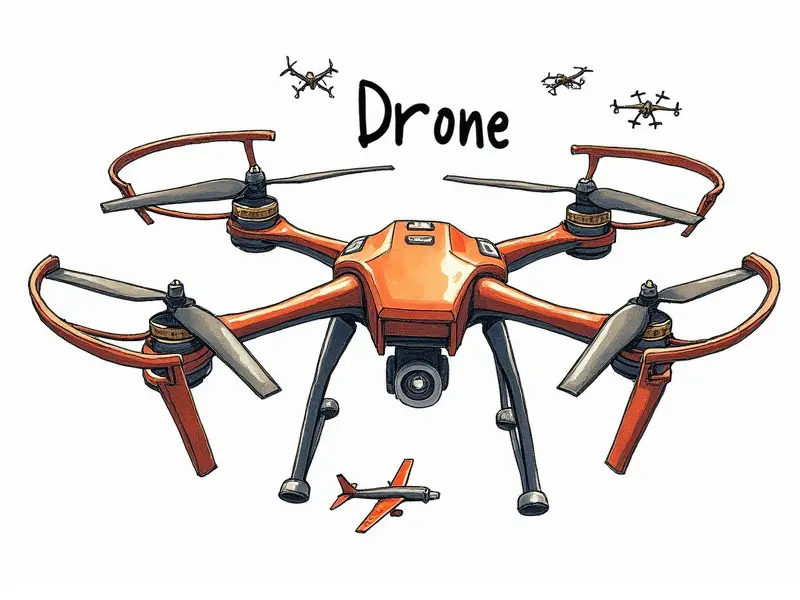Tuning a race drone?

Top Tips for Tuning Race Drones Fast
When it comes to tuning race drones, speed and precision are paramount. Whether you're a seasoned FPV racer or just starting out, mastering the art of drone tuning can significantly enhance your performance on the track.
- Understand Your Drone: Familiarize yourself with all components such as motors, ESCs (Electronic Speed Controllers), and propellers. Knowing how each part affects flight dynamics is crucial.
- Calibrate Sensors: Proper calibration of sensors like gyros and accelerometers ensures accurate data for your drone's control system.
- Tune PID Settings: Adjusting Proportional, Integral, and Derivative settings can greatly improve stability and responsiveness during high-speed maneuvers.
Secrets to Perfectly Tuned FPV Racing Drones
A perfectly tuned race drone is the difference between winning and losing in competitive racing. Here are some insider tips:
- Battery Management: Optimize your battery configuration for maximum power output without compromising flight time.
- Propeller Selection: Choose propellers that match your drone's motor specifications and desired performance characteristics.
- Frame Design: A well-designed frame reduces drag and enhances aerodynamics, contributing to faster speeds and better handling.
Turbocharge Your Drone with Precision Tuning
Precision tuning is essential for achieving the best performance from your race drone. Here’s how you can take it up a notch:
- ESC Calibration: Fine-tune ESC settings to ensure smooth motor control and efficient power delivery.
- Firmware Updates: Keep firmware updated for the latest performance enhancements and bug fixes.
- Flight Testing: Regularly test your drone under various conditions to identify areas needing improvement.
Quick Fixes for Optimizing Your Race Drone
Sometimes, small adjustments can make a big difference. Here are some quick fixes you can try:
- Balancing Propellers: Ensure all propellers are perfectly balanced to prevent vibrations and improve stability.
- Cable Management: Properly manage cables to reduce drag and ensure secure connections.
- Weight Distribution: Optimize weight distribution for better balance and control during high-speed maneuvers.
Master the Art of Race Drone Optimization
Mastery in race drone optimization involves a deep understanding of all aspects of your drone. Here’s how to get there:
- Component Upgrades: Regularly upgrade components like motors, ESCs, and batteries for better performance.
- Data Analysis: Use flight data logs to analyze performance metrics and identify areas for improvement.
- Practice Makes Perfect: Consistent practice under various conditions helps you fine-tune your drone's settings and flying skills.
Ultimate Guide to Fine-Tuning Race Drones
The ultimate guide to fine-tuning race drones covers everything from basic setup to advanced optimization techniques. Follow these steps:
- Initial Setup: Start with a solid foundation by setting up your drone according to manufacturer guidelines.
- Tuning Process: Gradually adjust settings based on performance data and real-world testing results.
- Ongoing Maintenance: Regularly maintain your drone to ensure it remains in optimal condition for racing.
Tune Up Your Drone for Lightning Fast Flight
To achieve lightning-fast flight, focus on these key areas:
- Motor Power: Optimize motor power settings for maximum speed and efficiency.
- Aerodynamics: Enhance aerodynamic design to reduce drag and increase top speeds.
- Firmware Tweaks: Customize firmware settings for improved performance and stability.
Boost Performance: Essential Drone Tuning Tips
Essential tuning tips can significantly boost your drone's performance. Here are some must-know techniques:
- Battery Capacity: Use high-capacity batteries for longer flight times and sustained power.
- ESC Settings: Fine-tune ESC settings to match motor characteristics and desired performance levels.
- Propeller Pitch: Adjust propeller pitch for optimal thrust and efficiency during racing conditions.
Secrets to Winning FPV Drone Racing
To win in FPV drone racing, you need more than just a well-tuned drone. Here are some secrets to success:
- Strategic Planning: Develop race strategies based on track conditions and your drone's capabilities.
- Pilot Skills: Enhance your piloting skills through practice and training sessions.
- Team Collaboration: Work closely with team members to share insights and optimize performance collectively.
Quick Fixes for Faster Drone Performance
Implement these quick fixes to enhance your drone's speed and responsiveness:
- Battery Temperature: Monitor battery temperature to ensure optimal operating conditions.
- Cable Lengths: Shorten unnecessary cable lengths to reduce weight and improve aerodynamics.
- Frame Adjustments: Make minor frame adjustments to optimize airflow and reduce drag.
Maximize Speed with Drone Tuning Tricks
Maximizing speed requires a combination of hardware upgrades and software tweaks. Here are some tricks to try:
- Motor Upgrades: Upgrade motors for higher RPMs and better thrust.
- Firmware Tweaks: Customize firmware settings for improved performance and stability.
- Aerodynamic Enhancements: Add aerodynamic features like winglets or spoilers to reduce drag.
Conclusion
Tuning a race drone is an ongoing process that requires patience, practice, and persistence. By following these tips and tricks, you can significantly enhance your drone's performance and increase your chances of winning in FPV racing competitions. Remember, the key to success lies not only in having the best equipment but also in mastering the art of tuning and piloting.

